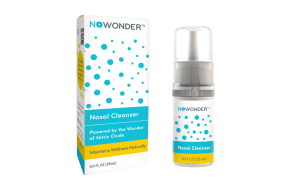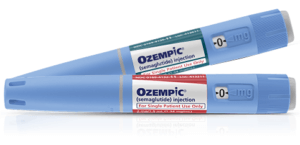For too long, aging has been framed as a male-dominated story of biohacks and trophies. Dr. Jennifer Garrison, an assistant professor of cellular and molecular pharmacology at the University of California, San Francisco, was reported in a New York Times article saying, “Males have always been the baseline for longevity. Females should be.” She talked about how researching women’s aging can benefit everyone.
A growing wave of scientists and clinicians is flipping that script by focusing on women, especially on the biology of ovaries and hormones. Centering women’s biology doesn’t exclude men; it opens clearer windows into the science of aging and practical steps toward healthier, longer lives for everyone.
What unique biological changes do women face as they age?
Women navigate distinct milestones that shape health across decades. The biggest is menopause, the natural end of menstrual cycles after a year without a period. Around this transition, hormone shifts can influence sleep, mood, temperature control, and heart, bone, and brain health. Bone density often declines faster in the years around menopause, raising long-term fracture risk. These changes are not failures of the body; they’re signals that systems are recalibrating. Understanding this window helps guide safer training loads, smarter nutrition, and routine screening. It also reframes “healthy aging for women” as a proactive process, not a single moment in time.
What exactly makes the ovaries “the canary in the coal mine of aging”?
Dr. Garrison calls ovaries the “canary in the coal mine.” Among organs and tissues, the ovaries appear to age the quickest. When ovarian function wanes, the ripple effects touch metabolism, bones, blood vessels, and the brain. Because these changes arrive earlier and more sharply than many other signs of biological aging, ovaries act like a sensitive early-warning system. Studying them helps researchers test ideas faster, accelerating aging research, and may reveal interventions that benefit all sexes. In everyday life, paying attention to cycle patterns, sleep quality, and recovery needs during the perimenopausal years can surface small adjustments that preserve long-term health.
How can studying the female X chromosome help men live longer?
Females have two X chromosomes. Throughout early life, only one of the two is chemically active, and the other sleeps. With aging, parts of the “quiet” X may become more active, producing proteins that support brain resilience. Early lab work links certain X-linked pathways to better learning and memory in older animals. This is not just “women’s biology”. It’s shared human biology with clues for everyone. Mining these insights could shape new tools for cognitive health across the lifespan, reinforcing that “women and aging research” is a lever for population longevity, not a narrow niche.
Why were women excluded from so many medical studies for so long?
Historic concern about harm to a fetus, plus worries that female hormones would “complicate” data, kept many women out of clinical trials. Even animal studies often used only males. The result: treatments and risk models were generalized from men to women and sometimes even to children. Requirements for sex balance have improved the picture, revealing meaningful differences in drug response, symptoms, and outcomes. Including women earlier leads to safer, more precise care for everyone.
What popular longevity trends among men may not work for women?
Some attention-grabbing practices, experimental blood transfusions, punishing extreme training, endless biometrics, can miss female physiology. Cycles, thyroid sensitivity, iron needs, and midlife hormone dynamics change how the body handles stress. The “longevity ladies” perspective favors sustainable function over spectacle: sleep regularity, strength that protects bones agains osteoporosis, joyful movement, stress trims, and social ties. These habits scale better across life stages than highly individualistic pursuits aimed at short-term records.
How does the age at which a mother goes through menopause predict the longevity of her children?
Later maternal menopause is associated with longer maternal lifespan and, on average, longer life in close relatives. That pattern hints at shared genetic pathways linking ovarian timing to systemic aging. It doesn’t “guarantee” outcomes for any individual, but it offers a window into a family’s genetic pool. Paying attention to the onset of menopause and perimenopause can inform screening plans and healthy routines earlier, when the payoff is greatest.
What is the “Centenarian Decathlon” and what is its purpose?
Think of the Centenarian Decathlon as a checklist of abilities a person wants to keep past 100 – carry groceries, stand from the floor, hike an hour, stay sharp, enjoy intimacy. It’s a friendly rival to headline-seeking contests like the Rejuvenation Olympics, grounding goals in real life. This lens aligns with female longevity priorities: preserve mobility, protect cognition, and maintain community connections. It’s less about out-teching aging and more about building capacities that matter daily.
How are scientists trying to use drugs to slow down ovarian aging?
Because ovaries age quickly, they’re promising targets for trials. Researchers are exploring medications that modulate cellular stress and nutrient-sensing pathways to see if they can delay ovarian decline. The aim is careful: slow the tempo of change, protect long-term heart, bone, and brain health, and learn lessons that spill over into broader longevity. It’s early days, but this work sits at the center of modern geroscience.
How can a person’s diet and social connections affect their longevity?
Diet and connection are the quiet engines of long life. Patterns rich in plants, fiber, and fermented foods support gut and metabolic health. Regular shared meals reduce stress and improve adherence. Strong social networks blunt isolation – a known risk for illness. This human layer of the wellness industry often outperforms gadgets: simple food, reliable routines, and caring communities can keep a person thriving for decades.
What you can take away from the New York Times article about Jennifer Garrison
Prioritizing women in aging research isn’t just about equality. It may unlock better health and longer lives for everyone. We encourage you to stay proactive about your own health, consult with providers, and lean on trusted pharmacies like IsraelPharm for safe, accessible support.
Helpful products and further reading
- For urogenital comfort around menopause: Vagifem
- For cognitive support routines: Zoomind
- Osteoporosis therapies: Prolia (denosumab), Evenity, Evista, Keeping Bones Healthy After 60 With Prolia
- Related blogs in our library: Vagifem for Comfort, Does Menopause Change Who I Am?, Closing the Gender Health Gap, What You Need to Know About Osteoporosis Awareness and Prevention
Frequently asked questions about women’s aging and longevity
Why focus on women to advance longevity for everyone?
Women’s biology reveals aging patterns sooner, especially in the ovaries, so discoveries arrive faster. Insights about hormones, immunity, and the X chromosome often generalize, guiding better prevention and care for all sexes.
Is menopause the main driver of health changes, or just one factor?
Menopause is a major milestone, but it’s part of a wider system. Activity, sleep, stress, nutrition, and social ties all shape outcomes. Treat it as a pivot point to refresh habits that protect bones, vessels, and the brain.
Do flashy longevity challenges help the average woman?
Short-term stunts rarely translate into durable gains. Most people benefit more from steady strength training, protein-aware meals, stress relief, and consistent sleep than from experimental protocols built for headlines.
What everyday steps support bone health around menopause?
Combine resistance training, balance practice, protein, calcium-rich foods, vitamin D as advised, and fall-prevention habits. Discuss screening schedules and therapies suited to personal risk. Small, steady changes compound over time.
What is “The Double X Prize” in this context?
It’s a shorthand for prioritizing research, tools, and funding that center women’s biology, especially X-linked pathways, to accelerate solutions for the whole population. Elevating these lines of inquiry closes long-standing gaps.
Where do social connections fit in healthy aging for women?
They’re core, not optional. Regular connection buffers stress, supports healthier routines, and improves adherence to care plans. Community makes long-term habits easier, and more enjoyable, to sustain.












